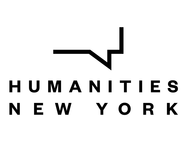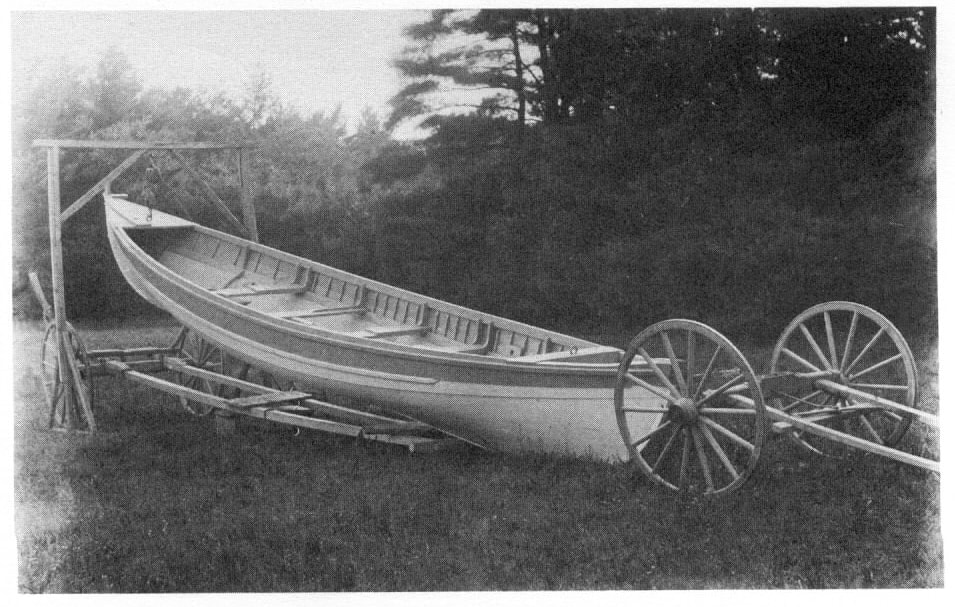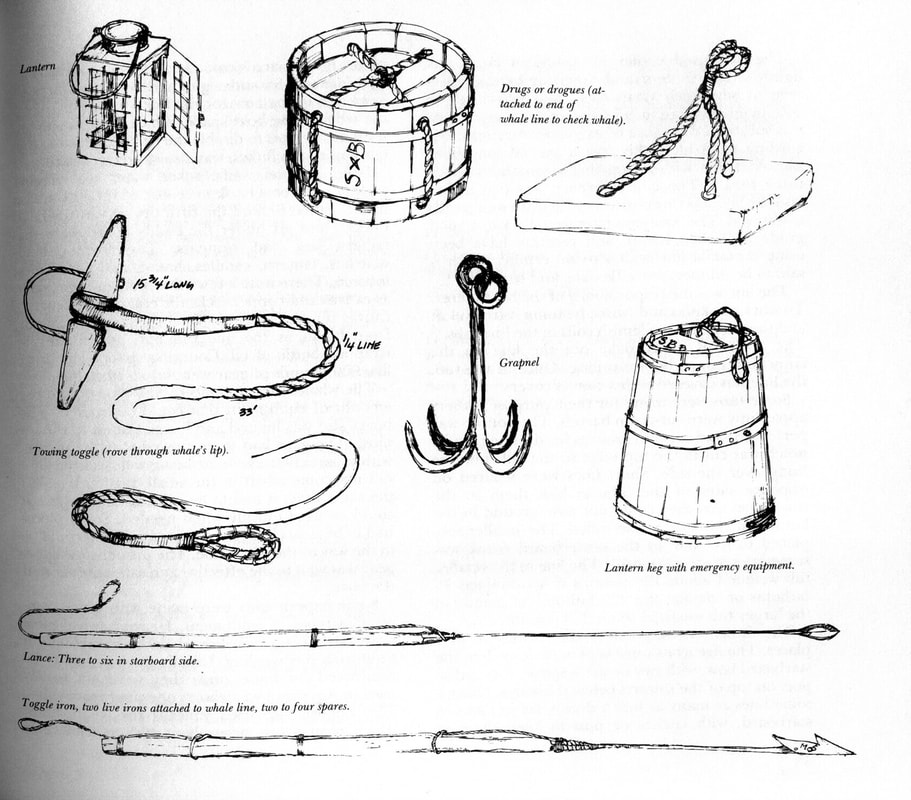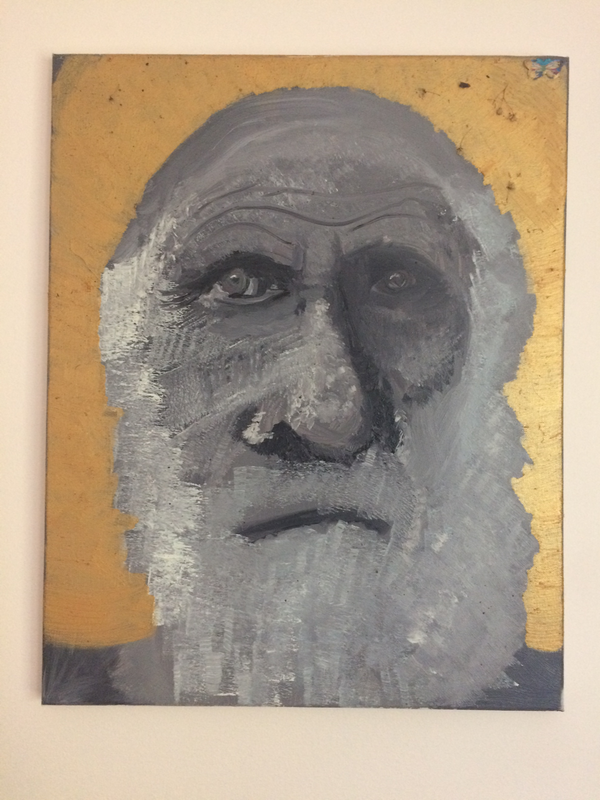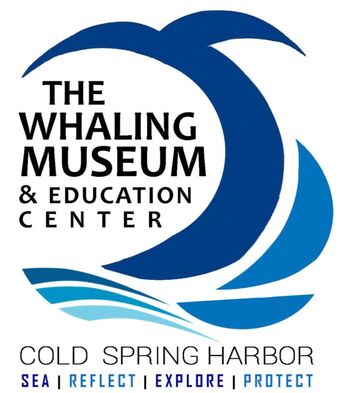|
Check our calendar for associated public programming! This project is generously supported in part by: |
Did you know the development of the whaling industry is tied to various significant and revolutionary advances in our society and environment?
We invite you to explore and celebrate the profound ways pioneers in the local whaling industry led New York in breaking key social, technological, racial, and economic boundaries of the 19th century. Portions of Exhibit, Including Artwork by Long Island Contemporary Artists, On View Below |
-
Science & Technology
-
Race
-
Gender
-
Geography
-
Environment
-
Art & Literature
-
Liberty
<
>
|
The whaling industry pushed tremendous strides in technological innovation through whaling gear, vessels, and tools - including lubrication that fueled inventions of the Industrial Revolution.
Tremendous strides were made as the development of whaling gear, vessels, and tools pushed for efficiency and greater profits.
Whaling technology improved over the years as harpoons gained hinged barbs, ships increased their shape and tonnage, and rigging details changed to incorporate winch technology to reduce skill and manpower needed to handle sails. |
American Whaleboats Were Technologically Brilliant
The most important tool of Yankee whaling was also its most ingenious innovation: the whaleboat.
|
The Greatest Innovator of All
Captain Thomas W. Roys was a record-breaking Long Island whaling captain in many ways. Born upstate in 1816, he started his career as a farmboy-turned-greenhand on Sag Harbor's Hudson, rising to master in 8 years. He discovered new seas and whaling grounds, invented multiple new whaling tools, and even wrote what is considered to be the first ‘textbook’ of whale species. He also foresaw that whaling, in its time, was not sustainable. His inventions, experiments, and methods were the bridge between the old sail and modern whaling techniques. |
|
Contemporary Artists Respond
Breaking Barriers 1 Louise Wallendorf (b. 1956) Wallendorf states: “I graduated from Cold Spring Harbor High School in 1974. Another female graduate and I were among the first women enrolled in college engineering programs with a marine focus. As a graduate student in ocean engineering in Rhode Island, my closest friends were involved in the first right whale surveys funded by the New England Aquarium. I read several of Joan Druett’s books on women in whaling. While an artist in residence in Zara, a dune shack in Cape Cod National Seashore, I developed a process of surf lithography using ball grained aluminum plates placed at the edge of the sea; the plates are drawn on by the movement of the salt water and sand, with added tusche washes and drawing. These two images contain portions of a plate created at Lloyd Harbor Beach, which to me have fluid motion showing broken barriers. These plates were processed using the less toxic lithography processes developed by Dwight Pogue of Smith College.” |
|
Whaling Broke Racial Barriers
One unique aspect of whaling was that it was our country’s first integrated industry. Although the lower-ranked workers were exploited, people of color started out on an even footing and, if they worked hard, could rise through the ranks. African Americans, West Indians, Shinnecocks, Montauks, Portuguese, Polynesians, Colombians, New Zealanders, Cape Verdeans, and “Kanakas,” or Native Hawaiians, were all regular crew members on whaling vessels and infused a great deal of cultural exchange in the trade. While they endured dangerous working conditions and abominable living conditions, including disease, undernourishment, and poverty, they also took advantage of an open economic opportunity which prized skill over skin color, not present in other land-based industries in the US at the time. |
|
Contemporary Artists Respond
Darwin as Saint Teodora Choolfaian (b. 1980) Oil on canvas, oak blossoms, sticker Choolfaian states:“This painting was inspired by the book Darwin's Sacred Cause: How a Hatred of Slavery Shaped Darwin's Views on Human Evolution. Darwin’s desire was to prove that slaves were no less human than their captors. He risked everything by publishing his theory of evolution. His ideas appeared radical, and yet Darwin persevered. He went on to create an entire new way of thinking that we take for granted. I painted a close-up portrait of Darwin, using a background of gold-leaf as in Orthodox Christian icons. I paid particular attention to Darwin's eyes. I wanted them to be alive so that anyone looking at the painting is "seen" by Darwin and feels his burning passion for truth as well as his fatherly judgement. Darwin’s deepest drive was proving that humans are all equal in their evolutionary development. I hope that my painting provokes conversation in this direction and helps us remember what it is that Darwin really wanted us to know.” |
|
Explore More on this topic in our Blog Posts:
|
Whaling Wives Broke Boundaries
The saga of hunting whales was unquestionably viewed as man’s world. “It is no place for a woman,” wrote Captain James Haviland on the Baltic in 1856, “on board of a whaleship.” Whaling wives pushed gender roles in two major ways:
By the 1850’s, one out of six whaleships carried the captain’s wife aboard. |
|
Contemporary Artists Respond
Village Blacksmith
Jovanna Hopkins (b. 1939) Photography Hopkins states: “The female blacksmith's expression shows her determination and strength in performing a job formerly only available to men. This young woman was very intense about her work. She was not distracted by the people viewing her in action as she demonstrated her craft. Her serious expression connotes her dedication.” |
|
Whalers Were Global Explorers
Long Island whalers expanded America’s horizons to the far corners of the world. They charted new seas, rapidly expanded knowledge of the Pacific and Arctic Oceans, discovered new species, visited distant countries, and impacted indigenous people around the world.
|
|
|
Contemporary Artists Respond
Untitled Roseann Rizzo (b. 1970) Papier Mache and ink on canvas Rizzo states: “This work of art feels topographical and it makes me think of the boundaries we humans have created and not just physical although those were some of the first boundaries we created. We have to stop thinking about ourselves as different: ethnic backgrounds, races, religions, genders. We have to start remembering that we are all people living on the planet together. We need to take care of it and each other. “ |
|
Whaling Pushed Environmental Boundaries
Industrialized whaling reached an unprecedented extreme in the 20th century, pushing whales to the brink of extinction.
Take the Carbon Footprint Quiz! |
|
Whaling Cultivated Remarkable & Diverse Art
The byproducts of whaling—teeth, baleen, and bone—became novel canvases for whalers’ imaginations. Both artistic and utilitarian scrimshaw offer unique insights beyond the into the lives and thoughts of sea labor in the Age of Sail. The earliest known works of engraved pictorial scrimshaw date from 1817-1821. As whaling voyages increased in length over the years, the art of scrimshaw flourished. Wives and children, who sometimes accompanied whaling captains to sea, also produced scrimshaw in significant numbers. |
|
Best in Show Captain Manuel Enos is considered one of the greatest scrimshaw artists of all time. Enos was born in the parish of Lajes Do Pico Island, Azores Island, Portugal on May 22, 1826. When he was a young man he served on the Cold Spring whaleships the Huntsville and the Sheffield. When stopping briefly in Cold Spring in the summer of 1849, he met Susan Brush and married her three years later in 1854 upon his return from a three year voyage. He had two daughters. He eventually became captain of the New Bedford bark Java. With the profits from a greasy voyage, he built a beautiful home on Main Street. When he returned to Cold Spring in 1869 after a long voyage on the Java he learned that his daughter, Melva, had passed away and another daughter, Elnore, had been born and was four years old, the exact age Melva was when he had departed. He didn't realize the difference until he was told. When he returned to whaling in 1849, Enos was presumed lost at sea. Recent research shows that he changed his name to Manuel Ignacio Enos de Macedo and started a new life with Petrona Araneda in Chile, and continued to whale out of Talcahuano well into the next decade. They had 9 children together. He died at the age of 89 in March 1915. There is a street in Talcahuano, Chili named in the honor of Captain Enos. This beautifully engraved whale tooth which shows Enos’s mastery of scrimshaw. The visual effect is heightened by Enos’s skilled use of black, red, green, blue, and yellow inks. |
|
Whaling Inspired One of the Greatest Works of American Literature
In 1841, 21-year old Herman Melville set sail aboard the ship Acushnet of Fairhaven, MA. He endured 18 months at sea, where he met Owen Chase during a gam (exchange of visits between two whaleships). Chase shared his father’s experiences on the ship Essex, which was sunk by a whale. “The reading of this wondrous story on the landless sea, and so close to the very latitude of the shipwreck, had a surprising effect upon me,” Melville later wrote. Inspired by stories whalemen told about a ferocious white whale, Melville published Moby Dick in 1851, a tale of a mad captain and his doomed ship and crew. Before this publication, the subject of whaling had a limited but significant representation in American literature. Critics gave Moby Dick mixed - sometimes scathing - reviews. Today, the book is considered by many to be the greatest single work in American Literature. |
|
Whaling Fueled Fashion, And Fashion Fueled Whaling
Before plastic and steel, baleen was widely used in women’s fashion. Women’s fashion in the 1800’s called for an upright posture, a small waist, and wide skirt. Corsets were worn to provide shape and support, with both whalebone and baleen supplying stiffness and shape. A busk (a flat, ruler-like piece) kept the wearer straight and upright. Whalemen often carved designs into busks as a memento for their sweethearts, knowing they would be worn close to the heart. |
Whaling Inspired Revolutionary Ideas in Colonists
One can see the seeds of the American Revolution planted in some of the personalities of the Island’s early whaling pioneers, and the colonial patriotism they showed in response to special taxes and laws established by several New York governors for the benefit of the Crown, wishing to tap into their profits.
Many whalers flouted what they felt were unfair laws with contempt.
One can see the seeds of the American Revolution planted in some of the personalities of the Island’s early whaling pioneers, and the colonial patriotism they showed in response to special taxes and laws established by several New York governors for the benefit of the Crown, wishing to tap into their profits.
Many whalers flouted what they felt were unfair laws with contempt.
- Samuel Mulford of East Hampton was a particularly colorful local character who fought loudly against colonial tyranny – perhaps for more than just the sake of whaling.
- With a whaling company of 24 men, he built the first wharf in the Hamptons. Strong-willed, he went to London in 1704 to successfully protest the whale oil tax (with fishhooks in his pockets to deter thieves). His farmhouse is one of the oldest in Suffolk county.


